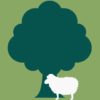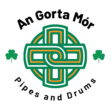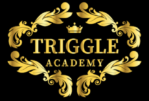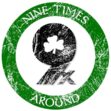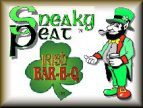1. BACKGROUND TO THE RISING
THE IRISH REPUBLICAN BROTHERHOOD (IRB)
One of the main and lasting effects of the Great Famine of 1845-47 was
emigration. The ‘Coffin Ships’ carried tens of thousands of the poorest Irish
people who fled Ireland to avoid starvation. They created a new Irish nation
within America whilst remembering the injustice of the English occupation of their
homeland as well as harboring a deeply felt hatred of landlords and evictions.
A Clann na Gael source estimated that there were over one and one half million
people of Irish birth in America towards the end of the nineteenth century. These
people supported the republican cause by giving money, weapons and,
significantly, a propaganda machine which has continued to this day.
The Irish Republican Brotherhood was formed in a Dublin timber-yard on Saint
Patricks Day in 1858. James Stephans was assisted by Thomas Clarke Luby,
James Denieefe, Garret O Shaugheynessy and Peter Langan.
Joe Denieefe brought financial support back from America. He had left Ireland
after the Ballingarry defeat in 1848. James Stephens , Michael Doheny and the
John O’Mahony fought in Ballingarry in 1848. Stephens was injured but still
manage to escape to Paris where he familiarised himself with the revolutionary
tactics of that country. He came back to Ireland to try to establish an
underground organisation to remove the English from Ireland.
Denieefe and Luby traveled the country extensively and organised military groups
called ‘circles’. They formed oathbound secret societies of loyal patriots. Popular
opinion did not support the revolutionary ideals of the IRB nor did the Church
whop were strongly opposed. The mainstream support came from the poorer
classes who, despite their poverty, were often highly idealistic.
At the time of the 1867 rising the membership of the IRB was estimated at over
80,000.
INFORMERS
Informers such as Corydon and Magle did untold damage to the IRB by betraying
their oath and giving information to the English.
The Fenian movement split in America in 1865. John O’Mahony took over from
the Stephans. O’Mahony was later himself to be deposed when his hesitation in
calling an insurrection dissatisfied the soldiers he commanded (many of which
were veterans of the American Civil War). Colonel Thomas J. Kelly,
was appointed Chief of Staff of the IRB in 1867 and departed for Ireland.
A rising was planned for February 1867. Chester Castle in England was to be
attacked and simultaneous raids in Ireland were to be carried out. The English
knew in advance however as the informer, Corydon, kept them informed.
The news had not filtered through to the Fenians in Ireland and sporadic battles
took place in Kerry and Dublin.
THE MANCHESTER MARTYRS
The IRB was reorganised in Manchester in July of 1867 and a supreme council
elected. Colonel Kelly and Jim Deasy were captured by the English and then
rescued by the Fenians in a daring raid in which a police officer was killed. Allen,
Larkin and O’Brien were hanged for their complicity in the events and they
became known as ‘The Manchester Martyrs’.
These mass funerals and events with the Land League focused the minds of the
popular masses on the injustice of English rule in Ireland.
CLAN NA GAEL
The IRB delegates in Manchester broke away from the feuding factions of
Fenianism in America and supported Clan na Gael who were founded there in
June of 1867. The objectives of Clann na Gael was to secure an independent
Ireland and to assist the IRB in achieving this aim. John Devoy was the mainstay
behind the Clan.
Devoy became involved in the ‘New Departure’ and assisted Davitt and Parnell in
their fight against the landlords. Independence remained his main aim however
as he felt that the Land League was not militant enough to remove the landlords.
Devoy, assisted by Doctor Pat McCartan, founded a newspaper, ‘The Gaelic
American’.
Doctor Pat McCartan transferred from Clan na Gael to the newly formed
‘Dungannon Clubs’, a separatist organisation which was denounced by the
Church.
Tom Clarke became a member of the Supreme Council of the IRB in 1909 and
helped form the revolutionary paper ‘Irish Freedom’. He became the link with
Clan na Gael in America.
In 1912 the IRB sent Sean MacDiarmada as a delegate to the Clan convention
and he succeeded in securing the enormous sum of $20,000 for the IRB at home.
IRISH VOLUNTEERS
In November 1913 the Irish Volunteers were formed in Dublin and 4,000 enrolled
on that first night. In 1914 Padraig Pearse went to America to raise funds to save
his Gaelic school, St. Enda’s. This was achieved and Pearse turned his attention to
revolutionary matters.
On his return from America he sought 1,000 rifles from McGarrity. He as assisted
by Seán Mac Diarmada, Eamonn Ceannt and Seán Fitzgibbon. Pearse was
convinced that the revolutionary force in Ireland had never been better organised
or equipped. His speech in 1914 reflected this:-
” It is my matured conviction that, given arms, the Volunteers who have
adhered to us as against Redmond may be depended upon to act
vigorously, courageously, promptly, and unitedly if the opportunity comes.
We are at the moment in an immensely stronger position than ever
before. The whole body of Volunteers that has supported our stand against
recruiting may be looked upon as a separatist body. In other words, the
separatist organisation has been multiplied by a hundred.
In Dublin, we have some 2,500 admirably disciplined, drilled, intelligent,
and partly armed men. Nationalist Ireland has never before had such an
asset. Our main strength is in Dublin, but large minorities support us
everywhere, especially in the towns and in the extreme South and West.
We expect to have 150 companies, representing 10,000 to 15,000 men,
represented by delegates at next Sunday’s Convention.
This small, compact, perfectly disciplined, determined separatist force is
infinitely more valuable than the unwieldy, loosely-held together mixum-
gatherum force we had before the split. The Volunteers we have with us
now may be relied upon to the death, and we are daily perfecting their
fighting effectiveness and mobilisation power. It seems a big thing to say,
but I do honestly believe that, with arms for these men, we shall be ready
to act with tremendous effect if the war brings us the moment.
The spirit of our Dublin men is wonderful. They would rise tomorrow if we
gave the word. A meeting of Dublin officers the other night was as
exhilarating as a draught of wine.
We gain daily in the country as Redmond’s treachery or imbecility
becomes more manifest. The recruiting campaign has failed utterly, and
already he is a discredited politician.”
THE GAELIC LEAGUE AND THE GAA
The IRB were influential in many cultural and national organisations. Most of the
leaders like Pearse, Plunket and McDonagh were fluent Irish speakers and were
members of the Gaelic League. The Gaelic Athletic Association (the GAA) was
formed by Cusack in November 1884.
THE GREAT WAR 1914-18
At the outbreak of the first world war, Redmond urged the Irish Volunteers to join
in the fight against the oppressors of small nations (Germany). 170,000 of the
Volunteers supported Redmond whilst 11,000 supported Pearse.
Tom Clarke urged the Supreme Council of the IRB that a rising must happen
before the end of the war, especially as the Irish Home Rule bill had been
suspended at the outbreak of the war. Pearse, Plunket and Ceannt drafted the
first military plans.
ROGER CASEMENT
Prior to the rising and thanks to Hobson, Casement and Childers, guns were
landed at Howth and Wicklow. Casement went to Germany where he published
the Irish cause in German newspapers. His efforts to secure weapons were dealt
a severe blow when he and the weapons they were attempting to smuggle into
the country were captured on Banna Strand.
Casement, an English subject, was eventually convicted of treason and hanged.
PLANS FOR THE RISING
Thomas Clarke was the main instigator of the rising, supported by Pearse, Seán
Mac Diarmada, Eamonn Ceant and Seán T. O Ceallaigh who went to America for
further assistance. Thomas McDonagh, Joseph Plunket and James Connolly. were
later brought on to the Supreme Council.
During all this activity Eoin McNeill was unaware of the secret body that was
organising the rising. Few penetrated the IRB as they prepared for the rising.
James Connolly used his paper ‘The Workers’ Republic’ to call for an armed revolt.
He used the Citizens Army to protect the paper.
The Irish Volunteers were holding recruiting meetings throughout Ireland and
training enthusiastically. They awaited the signal to act as the rising had been set
for Easter Saturday, 22nd of April, 1916.
Setbacks to the plan included the capture of Casement and the weapons, the
capture of Austin Stack, commandant of the Kerry Brigade and the discovery of
the plans for an uprising following a raid on German officials in New York.
The Supreme Council decided unanimously decided to proceed with the uprising
despite the fact that they knew it had little chance of success. It was decided to
strike on Easter Monday. In spite of the order from McNeill not to revolt, over
2,000 soldiers made a strike for freedom.
2. THE INSURRECTION
On Easter Monday, 24th April, 1916 the GPO was occupied by the revolutionary
forces. Pearse read the Proclamation of the Republic to a bemused gathering:
POBLACHT NA H EIREANN
THE PROVISIONAL GOVERNMENT
OF THE
IRISH REPUBLIC
TO THE PEOPLE OF IRELAND
IRISHMEN AND IRISHWOMEN: In the name of God and of the dead generations
from which she receives her old tradition of nationhood, Ireland, through us,
summons her children to her flag and strikes for her freedom.
Having organised and trained her manhood through her secret revolutionary
organisation, the Irish Republican Brotherhood, and through her open military
organisations, the Irish Volunteers and the Irish Citizen Army, having patiently
perfected her discipline, having resolutely waited for the right moment to reveal
itself, she now seizes that moment, and, supported by her exiled children in
America and by gallant allies in Europe, but relying in the first on her own
strength, she strikes in full confidence of victory.
We declare the right of the people of Ireland to the ownership of Ireland, and to
the unfettered control of Irish destinies, to be sovereign and indefeasible. The
long usurpation of that right by a foreign people and government has not
extinguished the right, nor can it ever be extinguished except by the destruction
of the Irish people. In every generation the Irish people have asserted their right
to national freedom and sovereignty; six times during the last three hundred
years they have asserted it to arms. Standing on that fundamental right and
again asserting it in arms in the face of the world, we hereby proclaim the Irish
Republic as a Sovereign Independent State, and we pledge our lives and the lives
of our comrades-in-arms to the cause of its freedom, of its welfare, and of its
exaltation among the nations.
The Irish Republic is entitled to, and hereby claims, the allegiance of every
Irishman and Irishwoman. The Republic guarantees religious and civil liberty,
equal rights and equal opportunities to all its citizens, and declares its resolve to
pursue the happiness and prosperity of the whole nation and all of its parts,
cherishing all of the children of the nation equally and oblivious of the differences
carefully fostered by an alien government, which have divided a minority from the
majority in the past.
Until our arms have brought the opportune moment for the establishment of a
permanent National, representative of the whole people of Ireland and elected by
the suffrages of all her men and women, the Provisional Government, hereby
constituted, will administer the civil and military affairs of the Republic in trust for
the people.
We place the cause of the Irish Republic under the protection of the Most High
God. Whose blessing we invoke upon our arms, and we pray that no one who
serves that cause will dishonour it by cowardice, in humanity, or rapine. In this
supreme hour the Irish nation must, by its valour and discipline and by the
readiness of its children to sacrifice themselves for the common good, prove itself
worthy of the august destiny to which it is called.
Signed on Behalf of the Provisional Government.
Thomas J. Clarke,
Sean Mac Diarmada,
Thomas MacDonagh,
P. H. Pearse,
Eamonn Ceannt,
James Connolly,
Joseph Plunkett
The Volunteers seized and fortified six positions In Dublin city: the GPO, the Four
Courts, Boland’s Mill, St. Stephen’s Green, Jacobs Factory and the South Dublin
Union. Attempts to seize Dublin Castle and Trinity College failed. This latter
failure severely restricted the Volunteers mans of communicating with each other.
The failure of the country to rise made it impossible to prevent the arrival of
English reinforcements. By Wednesady the revolutionaries were outnumbered by
20 to 1. The English secured a cordon about the city and closed in. They
concentrated their attack on the GPO whilst none of the other strongholds came
under the same sort of concentrated bombardment.
A gun-ship, the Helga, arrived in Dublin and field-guns were mounted on Trinity
College. The effect of the continuous shelling of O’Connell St. virtually destroyed
it and the surrounding areas. By Friday the GPO was engulfed in flames and
Pearse gave the order to surrender. 450 people, many of whom were civilians,
were dead with over 2500 wounded. The city was in ruins with the damage
estimated at a massive 2 Million pounds.
Over 3,500 people were subsequently arrested country-wide (including DeVelera
and Collins), although 1,500 were freed after questioning. 1,841 of these were
interned without trial in England, and 171 were tried by secret court martial
resulting in 170 convictions. 90 were sentenced to death but 75 of these
sentences were commuted to life imprisonment. The seven signatories of the
proclamation of independence (Pearse, Connolly, Clarke, MacDonagh,
MacDermott, Plunkett, and Ceannt) were all executed to the outrage of the Irish
public who had now begun to revise their opinion of the insurgents to that of a
heroic nature.
3. EFFECTS OF THE REBELLION
The rising was critical in terms of the overall fight for an Irish Republic.
For the first time the masses of the country wanted an end to English rule.
Nationalism swept the country especially as the details of the secret executions
became known.
National attention was brought to the Irish cause and to the oppressive ways in
which the English ruled the country.
These realisations were in all probability the main aim of the insurgents. The War
of Independence which followed in 1919, the subsequent Civil War of 1922, the
formation of the Irish Free State in 1923 and the declaration by Costello of an
Irish Republic can all be traced back to the events of Easter week, 1916.
~~~~~~~~~~~~~~~~~~~~~~~~~~~~~~~~~~~~~~~~~~~~~~~~~~~~~~~~~~
(C) Copyright The Information about Ireland Site, 2000
The Leader in Free Resources from Ireland
Free Irish coats of arms, screensavers, maps and more
http://www.ireland-information.com




